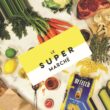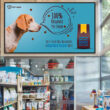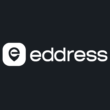At eddress, we are committed to always being one step ahead, moving just as fast as new trends and needs arise. We have been focusing on last-mile delivery excellence since our first day in 2015, with a seamless and simplified address organization system for fleet management & fast delivery services. In 2019, we made the move toward a fully decentralized & automated end-to-end platform to streamline the experience for businesses and their customers. Today, we are proud of what eddress has become; a white-labeled marketplace enabler in the industry.

Customers need everything right now
The global E-commerce market has grown from $1.3 billion in 2014 to almost $5 billion in 2021. Experts forecast further expansion by 50% by 2025. With the sudden increase in online shopping, it makes sense for businesses to target customers’ satisfaction with fast services. Indeed, countless e-commerce platforms, such as global leader Amazon, have started providing same-day delivery services, addressing the growing trends in the market. Customers already experience a sense of gratification immediately after completing a transaction online. The longer it takes to receive the item, the more they feel robbed of their pleasure. The need for effective last-mile delivery has increased dramatically to maintain instant gratification.
So, when the pandemic hit the world by surprise in 2020, eddress was ready to respond in real-time to people’s needs. At eddress, we understood that users quarantined by the pandemic couldn’t afford to wait days for everyday items, ranging from grocery shopping to work-from-home solutions. The typical e-commerce model was in need of an upgrade: Quick commerce, or Q-commerce for short.
Q-commerce vs E-commerce
Q-commerce addresses the limitations of E-commerce by providing on-demand instant delivery. In a Q-commerce model, customers order online and expect to receive their items in under an hour. The COVID-19 pandemic acted as a Q-commerce catalyst for local businesses, typically for grocery shopping. This online shopping business model is the 3rd generation of commerce, focused on hyperlocal delivery solutions to guarantee speed, convenience, and availability. Most key q-commerce players such as Gorillas, Getir, Jokr, Flink, Glovo, and GoPuff, promise hyper rapid delivery times under 60 minutes, which they can guarantee through the implementation of tools such as a decentralized and automated end-to-end platform. It makes sense that the local delivery network is instrumental in bringing the delivery to the customer’s address in a matter of minutes. eddress worked closely with Gorillas to launch their online food delivery marketplace in 2020, and witnessed the brand achieve unicorn status in under a year.
So, aside from the delivery model, what other differences can Q-commerce customers notice? Essentially, the instant delivery promise eliminates waiting list orders as customers can’t purchase items that are not immediately available. For everyday necessities, it’s a practical and convenient solution to tackle real-time needs.
Q-commerce growth
Quick commerce has made an impact on grocery shopping during the pandemic. Yet, we can learn from the growing online food delivery market size demand that customers are ready for this new commerce model.
We can expect many other industry sectors to join the Q-commerce revolution to provide on-demand instant delivery to their audience groups. So far, many industries such as pet stores, pharmacies, retailers, cloud kitchens, and beauty services among others, are already morphing into Q-commerce services for their local customers. What about you?
Do you want to find out more about transforming your business with a Q-commerce model? Reach out to the team to discover how we can help you.







